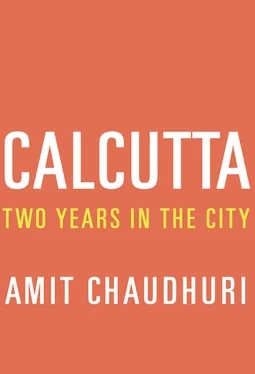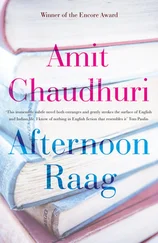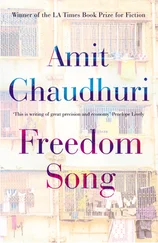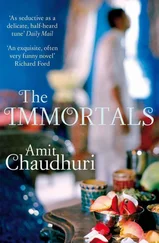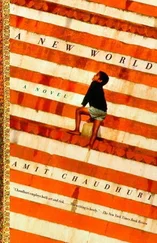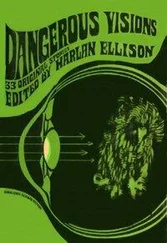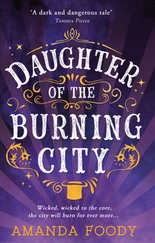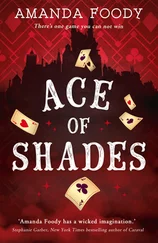* * *
25 December 2009: the Bengal Club Christmas lunch menu had lobster bisque as usual. Then there were the other things — fish buried under almond sauce; roast ham with a sort of dark twinkling lacquer veneer; turkey, of course, most unexciting of meats. But how could you have a Christmas lunch without turkey? And Christmas pudding in brandy cream. It was the sort of weather in which a jacket and tie — the club’s dress code for men for the event — is just fine. Most people were into their mid-fifties and beyond; and there was a lot of sipping of cocktails and mocktails, donning of paper hats, a mild, unselfconscious, bravura indulgence in silliness. The club was once designed to keep natives at bay—“Dogs and Indians not allowed”—but now, I’d say hesitantly, it’s old-fashioned, yet lacking in hauteur. We were here en famille; with my wife, my daughter, who, with a friend, ate separately from us in the Oriental Room, my parents, parents-in-law, my sister-in-law and her husband, Kabir (who live in a remote London suburb). Kabir had retrieved a pale khaki linen suit for the afternoon.
After occasions like this, we generally scatter. My father is no longer clear about what his intentions are, and seems ready to be led almost anywhere; my mother isn’t certain why my father has changed in the last two years into this indeterminate human being. My daughter is easily bored; barely eleven years old, she had, that day, some tantalising rendezvous to keep at home — it made her restless. My parents-in-law are excessively polite, as almost all Bengali in-laws are if they’re in the disadvantageous position of being of the daughter’s family: they convinced me (as they do each year) of the exceptionally good time they’d had. Kabir looked as if he’d had enough of wearing his khaki-coloured linen suit.
And so they dispersed, one by one, from Russell Street, which opens at this end on to Park Street. And, as on our wedding night, my wife and I were eventually left alone with each other — but on the compound of the Bengal Club. I didn’t want to leave the neighbourhood; I’d half-succumbed to the same wishful enchantment that I do when I’m here. Besides, I’d eaten too much; the residue of the piece of Christmas pudding saturated in brandy cream not only didn’t fit in with my experience of Christmas Day — it felt out of place in my stomach. My arteries were, predictably, asking for caffeine.
“Let’s go to Flurys,” I said, knowing fully we’d have to wait to get in. In my mind was the undeniable realisation, “Christmas comes once a year,” uttered by the angel floating ministeringly at one shoulder, with the devil at the other shoulder adding, “And you’re half a minute away from Park Street.” Perhaps they were both angels? And in which part of the world could you have such a Christmas afternoon, with its special aimless anticipation — except in Calcutta, and here? People were at large. They looked unaware of various things, of the complex history that killed Christmas on this street and now for whatever reason had resurrected it. There’s something almost miraculous about the continual return of Christmas to Park Street; it’s a miracle that (despite the fact that all miracles are apocryphal) I didn’t want to miss. As with all festive occasions these days in this city, what had once started probably in the nineteenth century as part of a secular metamorphosis (the emergence of a new, busy, pleasure-loving middle class; a fresh air of celebration) is now woven into a cheery provincialism, of a city no longer emblematic but ordinary, yet uncannily lit by its past. The strollers on Park Street seemed as unmindful of yesterday as they were of history: Christmas Eve didn’t survive even as memory. They were on their way somewhere, for no good reason, as we were, to Flurys; the hawkers were selling the little clay Santas with the mildly nodding heads and parsimonious beards, as if Christmas Eve were still a few days away. It didn’t occur to them, or to the passers-by, that you mightn’t want anything to do with Santa — clay or otherwise — once Christmas Eve was over. I had once bought one for my daughter, a few years ago, and she didn’t want anything to do with it then; it stood on a shelf for two weeks, its head vibrating every time you struck it with your finger, and then its one colour began to fade, the already faint red ebbing into something like an impressionist’s wash. Its inside was white, and hollow like a bell. As with such objects, they become hand-me-downs to the less privileged, and a maid took it for her daughter after I reluctantly consented to part with it.
Flurys was full of afternoon revellers. We would need to wait for fifteen minutes to enter; I had a sudden urge — not so sudden, the thought was at the back of my mind — to check out Ramayan Shah’s. “Could I … you could come with me”—but my wife shook her head and indicated she’d wait for my return here , in the small queue keeping vigil outside Flurys, “OK — back in ten minutes — we should have a table by then”—and I went down the steps and past the magazine vendors and across the road, having loosened my tie, folded my jacket (the last sign of the Bengal Club luncheon) on the crook of my arm. There was activity at the petrol station and in front of Mocambo, of course, but, coming to Ramayan Shah’s, I found an odd solitude, a release of purpose. A strange cessation reigned here. This wasn’t only because Ramayan Shah was missing again (did it really matter if he was there or not? — more and more he seemed a symbol of elusiveness, like Godot), but that the inner rhythm here was different — from the rest of the neighbourhood and from its own incarnation on normal days. Right next to Nagendra’s ironing stand were two figures asleep on string beds, covered from toe to head in sheets keeping out, in the shroud-like form of rural Indian sleepers, what this country has in such abundance and what makes it so attractive: sound and daylight. They were still, but crawling with flies; Christmas, possibly, had given them justification to withdraw into this cocoon. “Where’s Nagendra?” I asked; thinking, too (Fitzgerald once defined the writer as one who can harbour two incompatible thoughts in the head simultaneously), that our table at Flurys might now be available. A man dicing vegetables gestured towards one of the motionless figures on which dozens of Christmas flies had alighted — alighted, it became clear in a second, with no long-term commitment to the venue. A little further off, Ramayan Shah’s son Hridayanand was scouring a pot with a dreamlike containment, neither happy nor unhappy. I think he was probably incapable of being unhappy, or, like most children, was unhappy about immediate rather than overarching matters. Right now he was more bored than unhappy. Since sociological rigour is essential when you’re writing of a city, I asked the man dicing vegetables who he was and, intrusively, what his earnings were like. He said he was Gupta, proprietor of the Chandan Hotel (I’d noticed the unostentatious handwritten sign long ago and had been cautioned that it was not the name of Ramayan Shah’s outfit). This neglected space, this bit of nothing, left for future use between Nagendra’s stall and Ramayan Shah’s stove, I’d always presumed “belonged” to the latter, that it served a function in his two-decade-old enterprise; but on meeting Gupta the Chandan Hotel acquired, for me, a tenuous territorial shape. Gupta, in reply to my socio-economic query, said he earned a hundred and fifty rupees a day (this was odd, because I’d never seen him plying his trade; but it was clearly either the average on the pavement near Mocambo, or a number that tripped easily off the Bihari tongue). On Christmas Day, he admitted he made less. I would’ve questioned him further about this disappointing dip in his income, but wanted to get back to Flurys while I still stood a chance of getting a table.
Читать дальше
